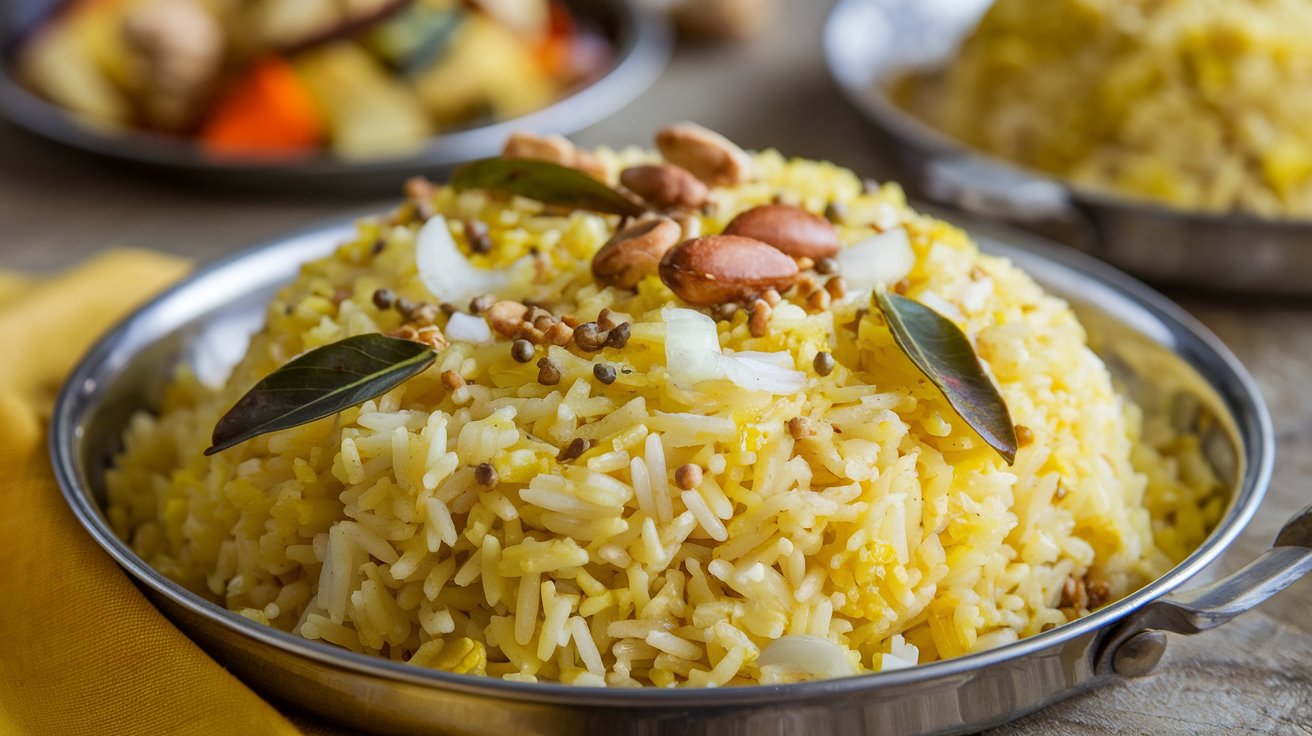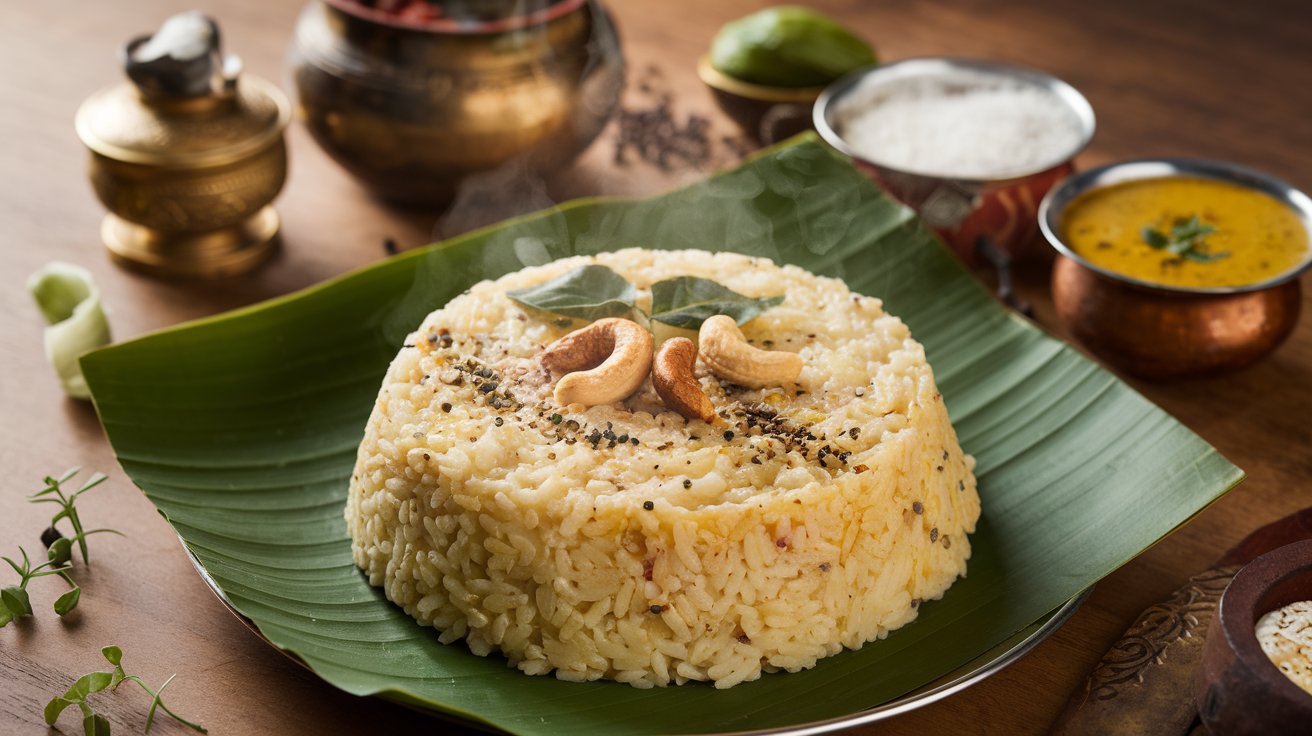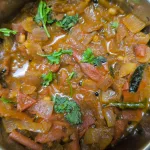

Join the Newsletter
Dive into quick, nutritious recipes, expert health tips, local food finds, and the latest in nutrition. Let’s explore healthier living together!
Low-Calorie Indian Breakfast: The Ultimate Guide to a Healthy Start
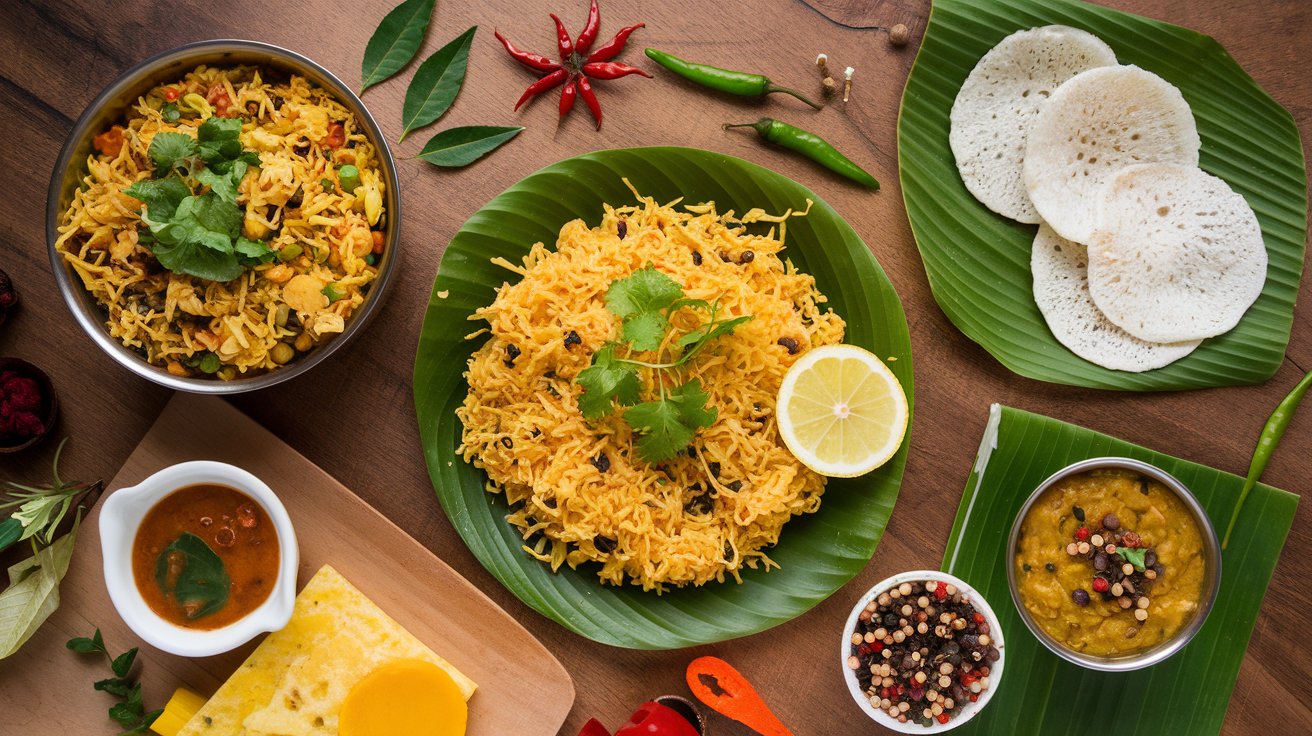
Affiliate Disclosure
Before reading this post, please be aware that some links in this article are affiliate links. This means that if you click on one of these links and make a purchase, we may earn a commission at no additional cost to you. We only promote products and services that we believe will be beneficial to our readers.
For more information, please read our full Affiliate Disclosure.
Introduction
Starting your day with a low-calorie Indian breakfast can do wonders for your health and energy levels. Whether you’re trying to lose weight, maintain a healthy lifestyle, or simply want to fuel your mornings with nutritious foods, Indian gastronomy features a rich selection of meals that are both flavorful and calorie-conscious. From savory poha to steamed idlis, the choices are endless.
In this article, we will dive deep into everything you need to know about creating and enjoying a low-calorie Indian breakfast. You’ll learn about the nutritional benefits, explore traditional dishes, discover mouthwatering recipes, and find tips on making your morning meals even healthier. Plus, we’ll cover common mistakes to avoid and answer some frequently asked questions to ensure you’re making the best choices for your daily diet.
By the end of this guide, you’ll have all the tools you need to make your low-calorie Indian breakfast both nutritious and delicious.
Why a Low-Calorie Indian Breakfast is Essential
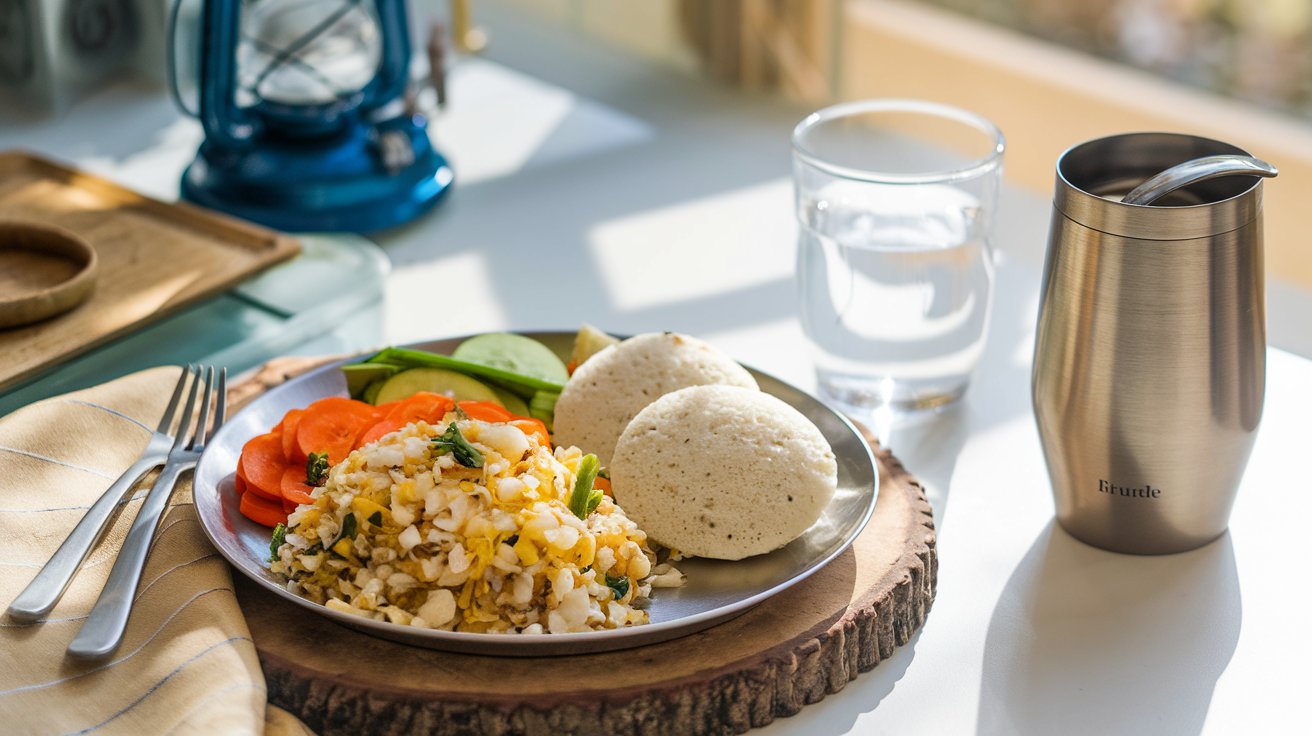
Eating a low-calorie Indian breakfast helps kickstart your metabolism and gives your body the essential nutrients it needs to function efficiently throughout the day. The emphasis on low-calorie foods helps keep energy levels up while avoiding calorie overload. Here’s why it’s crucial:
- Weight management: A breakfast low in calories helps control your daily caloric intake, which is key to maintaining or losing weight.
- Sustained energy: A balanced low-calorie Indian breakfast can offer steady energy, preventing mid-morning crashes.
- Better digestion: Many Indian breakfast dishes are rich in fiber, promoting good digestion and keeping your gut healthy.
Nutritional Benefits of a Low-Calorie Indian Breakfast
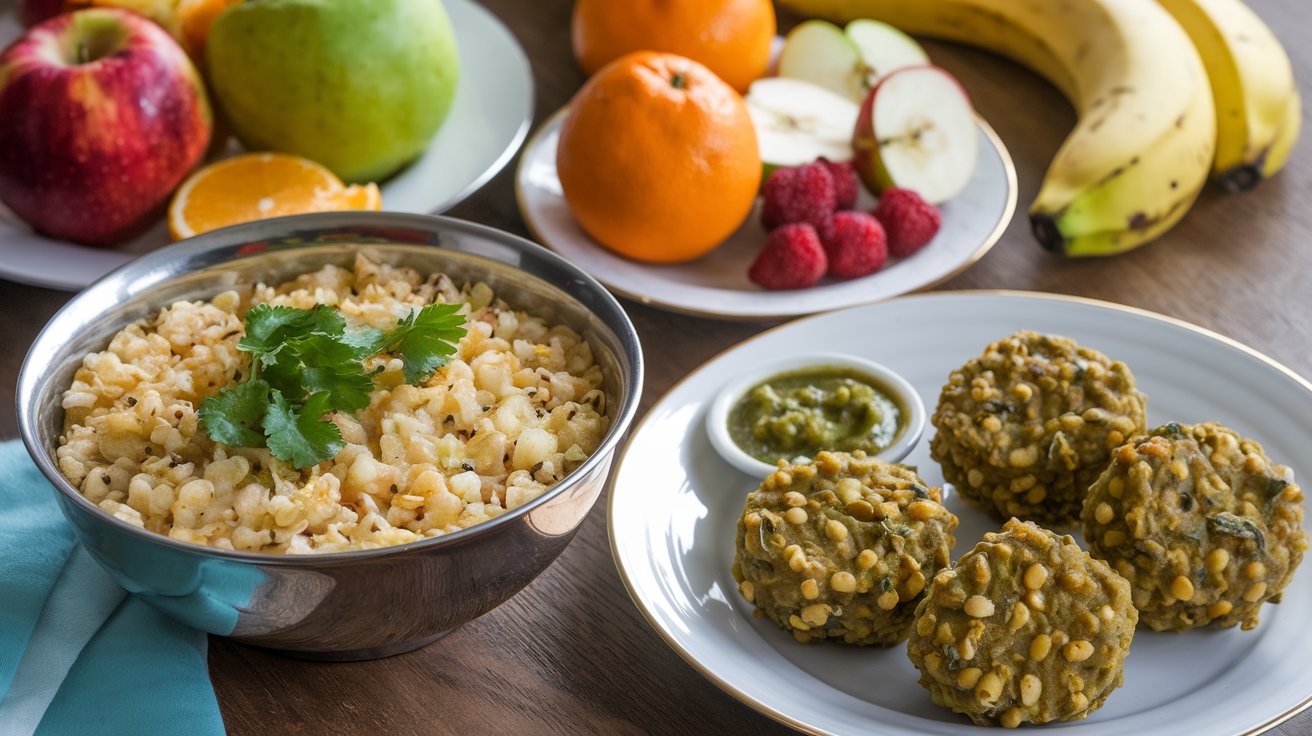
Indian cuisine is often perceived as heavy and rich in calories. However, with a few tweaks, you can create a nutritious and low-calorie Indian breakfast that’s brimming with health benefits.
High Fiber Content
Many traditional Indian breakfast items, such as upma, idli, and dalia, are rich in fiber. Fiber helps regulate digestion, keeps you full longer, and reduces hunger cravings.
Rich in Protein
For those looking to increase their protein intake, dishes like moong dal chilla or ragi dosa offer high amounts of plant-based protein. A low-calorie Indian breakfast doesn’t have to mean low on protein!
Packed with Essential Vitamins and Minerals
By incorporating vegetables and whole grains, you can make sure your breakfast is filled with vitamins and minerals such as iron, calcium, and potassium. This helps boost your immunity and supports overall health.
Traditional Low-Calorie Indian Breakfast Dishes
When it comes to creating a low-calorie Indian breakfast, traditional recipes can be your best friends. Here’s a breakdown of some popular dishes and their calorie content:
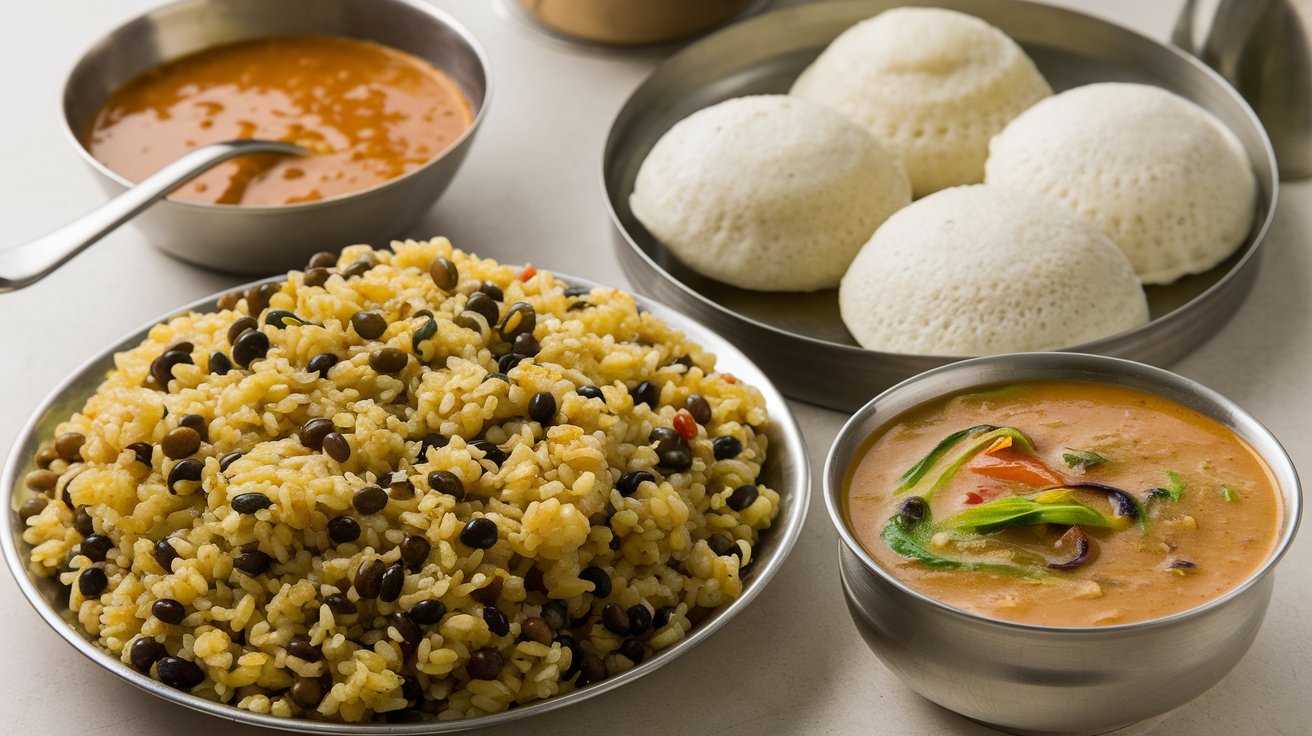
Poha
Poha is made from flattened rice and is often cooked with vegetables, peanuts, and spices. It’s hearty, wholesome, and maintains a low calorie profile.
Why Poha is a Good Choice
A bowl of poha typically contains about 250 calories. It’s rich in carbohydrates, provides a moderate amount of protein, and can be enhanced with vegetables for added fiber. Not to mention, poha is incredibly easy to prepare, making it a convenient option for busy mornings.
Upma
Upma is a savory porridge made from semolina (rava) and often includes veggies like carrots, peas, and onions. It’s a great example of how a simple dish can be made nutritious.
Nutritional Value of Upma
A serving of upma contains around 180-200 calories. It is low in fat and high in fiber and essential minerals like iron and magnesium. Adding more vegetables to your upma increases its nutrient density without significantly raising the calorie count.
Idli-Sambar
Idlis are steamed rice cakes served with sambar, a flavorful lentil-based soup. This is one of the most popular low-calorie Indian breakfast options due to its simplicity and health benefits.
Idli-Sambar’s Health Benefits
A single idli has just 39 calories, making it an ideal low-calorie food. When paired with sambar, which is rich in protein and fiber, this dish becomes a balanced meal with all essential nutrients.
Dalia (Broken Wheat Porridge)
Dalia, or broken wheat, is commonly prepared as a porridge and can be cooked both sweet and savory. It’s a great source of fiber and a popular choice among health-conscious individuals.
Why Dalia is Ideal for Weight Loss
A bowl of dalia contains approximately 150 calories. Its high fiber content aids digestion, and its low glycemic index helps regulate blood sugar levels, making it perfect for a low-calorie Indian breakfast.
Moong Dal Chilla
Moong dal chilla is a savory pancake made with ground moong dal (lentils). This dish is not only low in calories but also packed with protein.
High Protein, Low Calorie
Each moong dal chilla has around 100 calories and is rich in protein, making it an excellent breakfast option for those looking to maintain muscle mass while keeping calorie intake low.
Ragi Dosa
The Ragi dosa, made from finger millet, is another healthy and low-calorie Indian breakfast option. Ragi is rich in calcium, fiber, and iron.
Nutritional Benefits of Ragi Dosa
A single serving of ragi dosa has about 150 calories and provides essential nutrients like calcium, which is particularly beneficial for bone health.
Top Low-Calorie Indian Breakfast Recipes
Now that we’ve covered the benefits of these traditional dishes, let’s dive into some recipes. These low-calorie Indian breakfast recipes are easy to prepare and full of flavor.
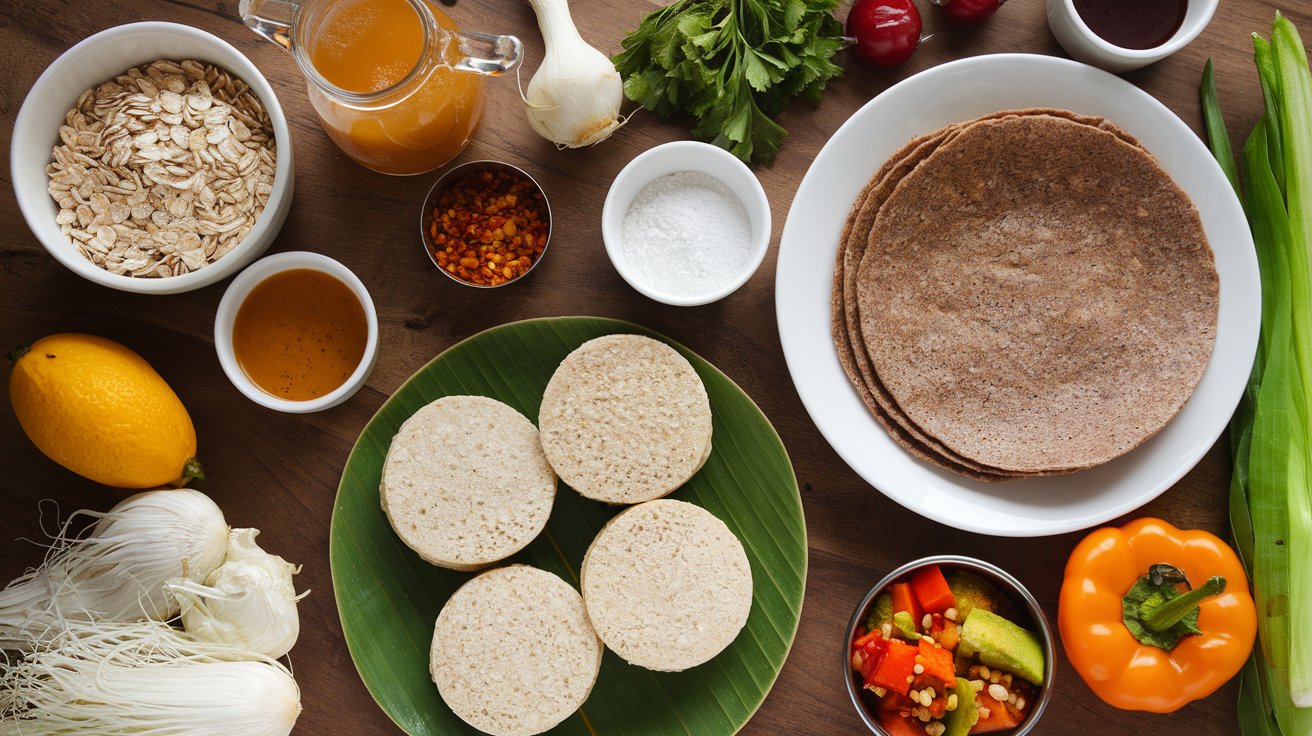
Vegetable Poha Recipe
Ingredients
- 1 cup poha (flattened rice)
- 1 small onion, chopped
- 1 small potato, chopped
- 1 green chili, chopped
- 1/2 tsp mustard seeds
- Curry leaves
- Salt and turmeric to taste
- Lemon juice
- Fresh coriander for garnish
Directions
- Rinse the poha under cold water and set aside.
- Add oil to a skillet and then incorporate mustard seeds. Let them crackle.
- Add chopped onions, potatoes, and green chili. Sauté until the potatoes turn golden.
- Mix in the turmeric and salt.
- Stir in the rinsed poha and cook for 2-3 minutes.
- Garnish with lemon juice and fresh coriander. Serve hot.
Oats Idli Recipe
Ingredients
- 1 cup oats
- 1/2 cup yogurt
- 1/4 cup grated carrots
- 1/2 tsp mustard seeds
- 1 tsp oil
- Salt and turmeric to taste
- Water as needed
Directions
- Dry roast the oats until golden, then grind them into a fine powder.
- In a bowl, mix oats, yogurt, grated carrots, salt, and turmeric.
- Add water gradually to make a batter.
- Heat oil and add mustard seeds. Once they crackle, mix them into the batter.
- Pour the batter into an idli mold and steam for 10-12 minutes.
- Serve with coconut chutney or sambar.
Ragi Dosa Recipe
Ingredients
- 1 cup ragi flour
- 1/4 cup rice flour
- 1/2 cup yogurt
- 1/4 tsp cumin seeds
- Salt to taste
- Water as needed
Directions
- Combine ragi flour, rice flour, yogurt, cumin seeds, and salt in a bowl.
- Gradually add water to form a smooth, pourable batter.
- Pour the batter onto a hot tawa and cook on both sides like a regular dosa.
- Serve with chutney or sambar.
How to Make Your Low-Calorie Indian Breakfast Healthier
Even if you’re eating traditional low-calorie Indian breakfasts, there are ways to further boost the nutritional value of your meal. Here are some tips:
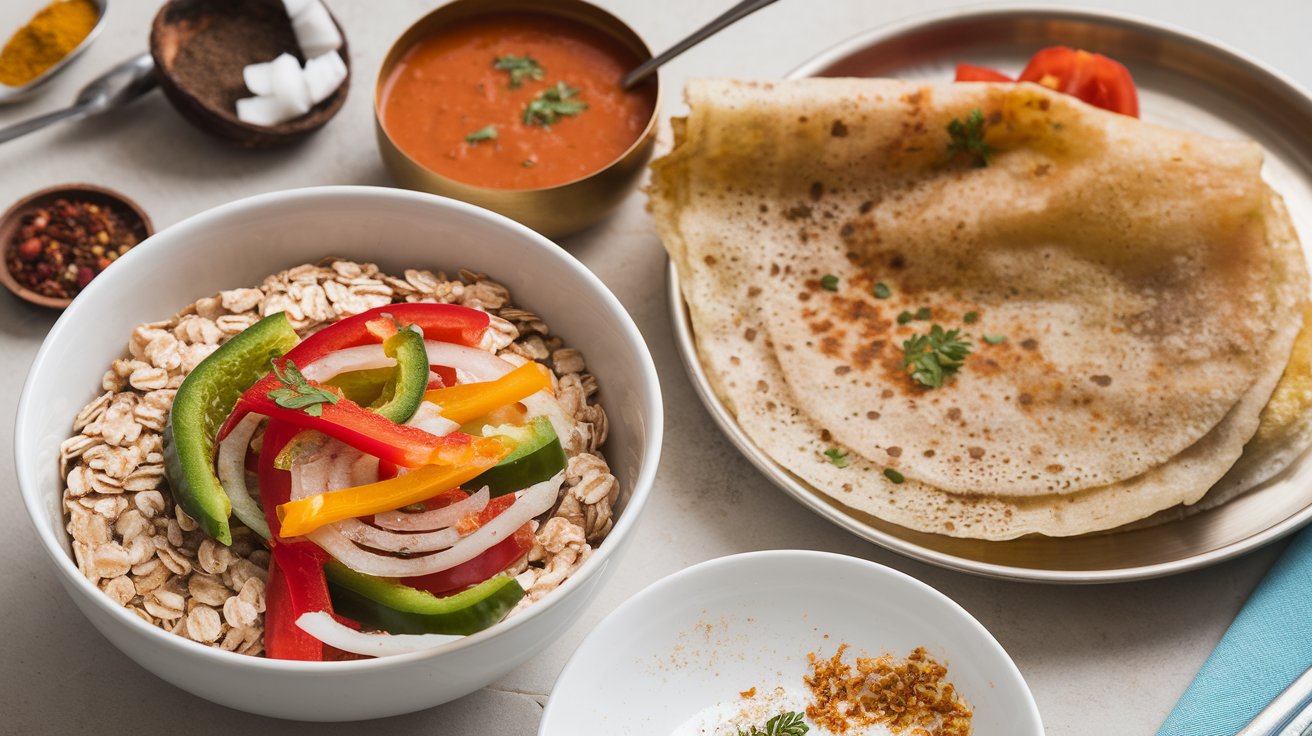
Use Whole Grains
Swap refined grains for whole grains like oats, ragi, and millet. Whole grains are rich in fiber, which helps keep you full longer and promotes better digestion.
Incorporate More Vegetables
Adding vegetables to your breakfast not only increases the nutrient content but also adds bulk to your meals without significantly increasing calories.
Reduce Oil Usage
Many traditional Indian dishes use a lot of oil. To keep your breakfast low-calorie, consider using non-stick cookware or reducing the amount of oil in your recipes.
Control Portion Sizes
Even if you’re eating low-calorie foods, portion control is key. Too much of anything, even healthy food, can lead to overconsumption of calories.
Common Mistakes to Avoid in a Low-Calorie Indian Breakfast
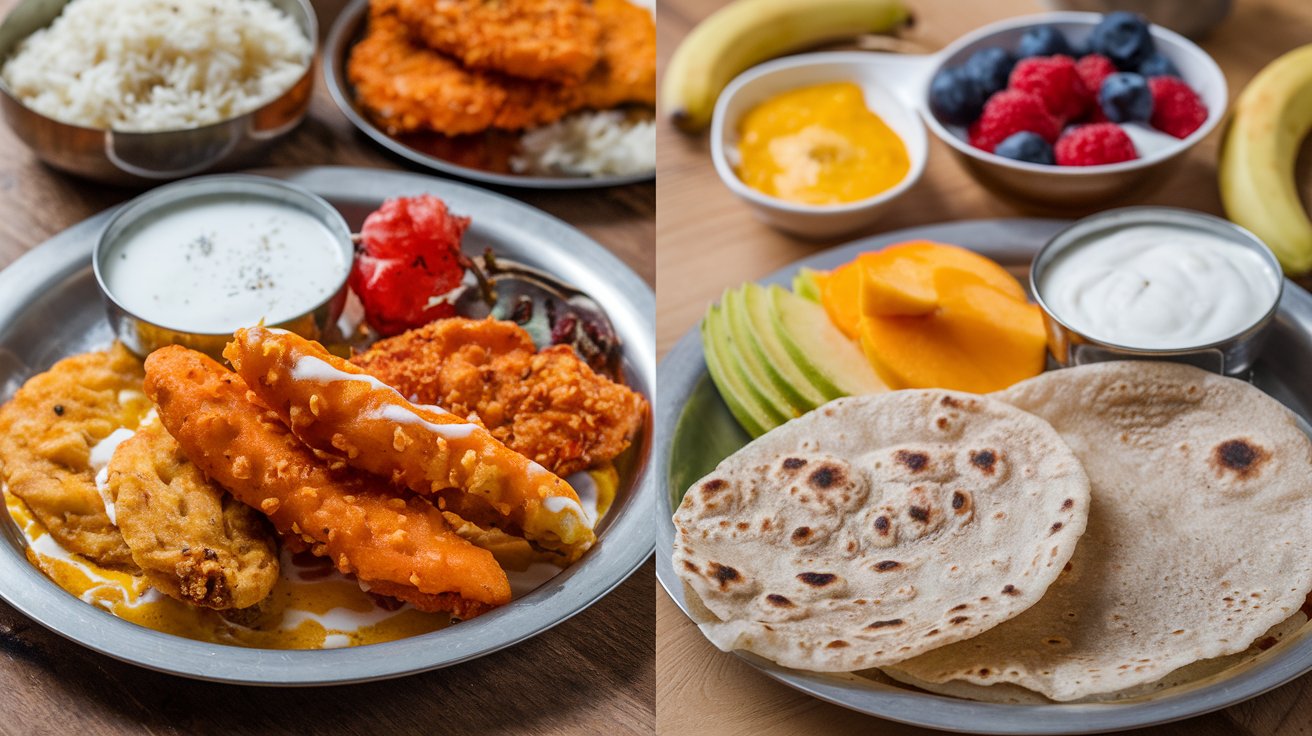
- Overuse of Oil and Ghee While ghee is healthy in moderation, overusing it can quickly add unnecessary calories to your meal.
- Skipping Fiber Fiber is essential for digestion and keeps you feeling full. Skipping fiber-rich foods can lead to hunger soon after eating, increasing the temptation to snack.
- Adding Too Much Sugar If you’re having a sweet breakfast like dalia or oats, avoid adding too much sugar. Choose natural sweeteners such as honey or fresh fruits instead.
- Neglecting Protein Protein is crucial for muscle repair and keeping you satiated. Ensure your breakfast includes a good source of protein like lentils, eggs, or dairy.
Conclusion
A low-calorie Indian breakfast is not only nutritious but also versatile. With the right ingredients and a few mindful cooking practices, you can enjoy delicious meals that support your health and weight management goals. Whether you’re having poha, idli, or a protein-packed chilla, the options are endless and satisfying.
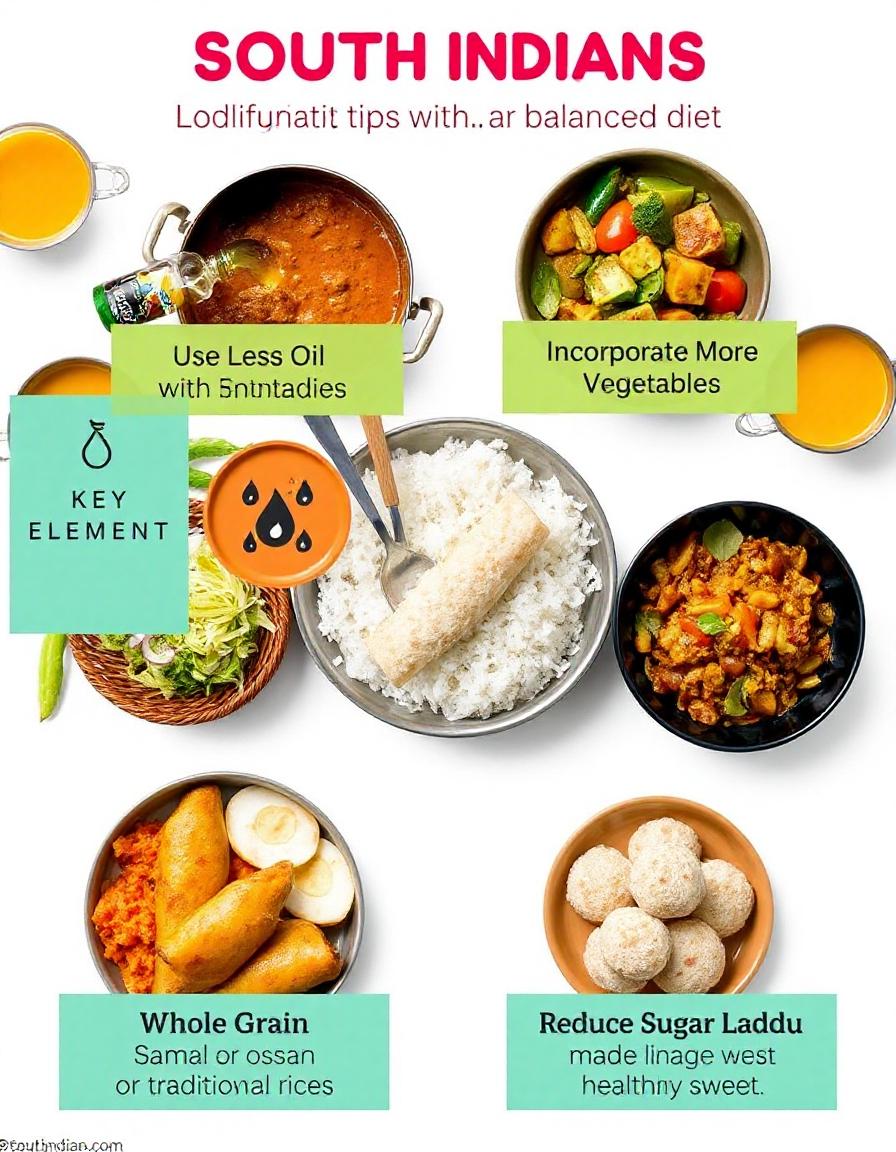
Don’t miss out! Read this post to get all the details on How to Modify South Indian Dishes for a Balanced Diet!
FAQs
What are some good low-calorie Indian breakfast options?
Some great low-calorie Indian breakfast options include poha, upma, idli-sambar, moong dal chilla, and ragi dosa. All of these dishes are under 300 calories per serving.
Can I eat paratha on a low-calorie diet?
Yes, you can enjoy paratha on a low-calorie diet by using whole wheat flour, minimizing oil or ghee, and stuffing it with healthy fillings like vegetables or paneer.
How can I reduce the calorie content of my Indian breakfast?
You can reduce the calorie content by using less oil, opting for whole grains, and adding more vegetables to your meals. Steaming or grilling instead of frying is another way to cut down on calories.
Is a low-calorie breakfast good for weight loss?
Yes, a low-calorie Indian breakfast can help with weight loss by keeping your caloric intake in check while still providing essential nutrients and energy.
Can I include dairy in a low-calorie Indian breakfast?
Yes, you can include low-fat dairy products like skimmed milk, low-fat yogurt, or paneer made from toned milk to keep your breakfast low in calories.

Welcome to Merge Blog!
Dive into quick, nutritious recipes, expert health tips, local food finds, and the latest in nutrition. Let’s explore healthier living together!
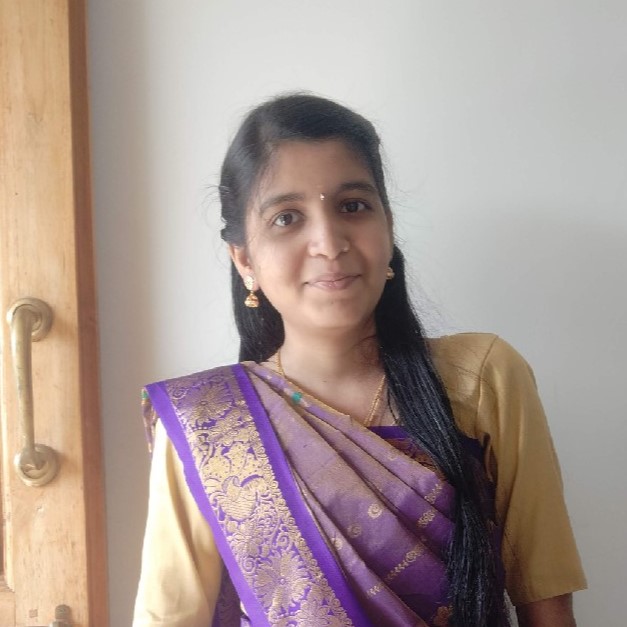
I’m Divya Bharathi, the person behind MergeBlog. I’m a passionate food enthusiast sharing simple, nutritious recipes and tips for a balanced lifestyle. Join me on this delicious journey!
Divya Bharathi
SUBSCRIBE & FOLLOW
MUST-READ ARTICLES
Join the Newsletter
Dive into quick, nutritious recipes, expert health tips, local food finds, and the latest in nutrition. Let’s explore healthier living together!
